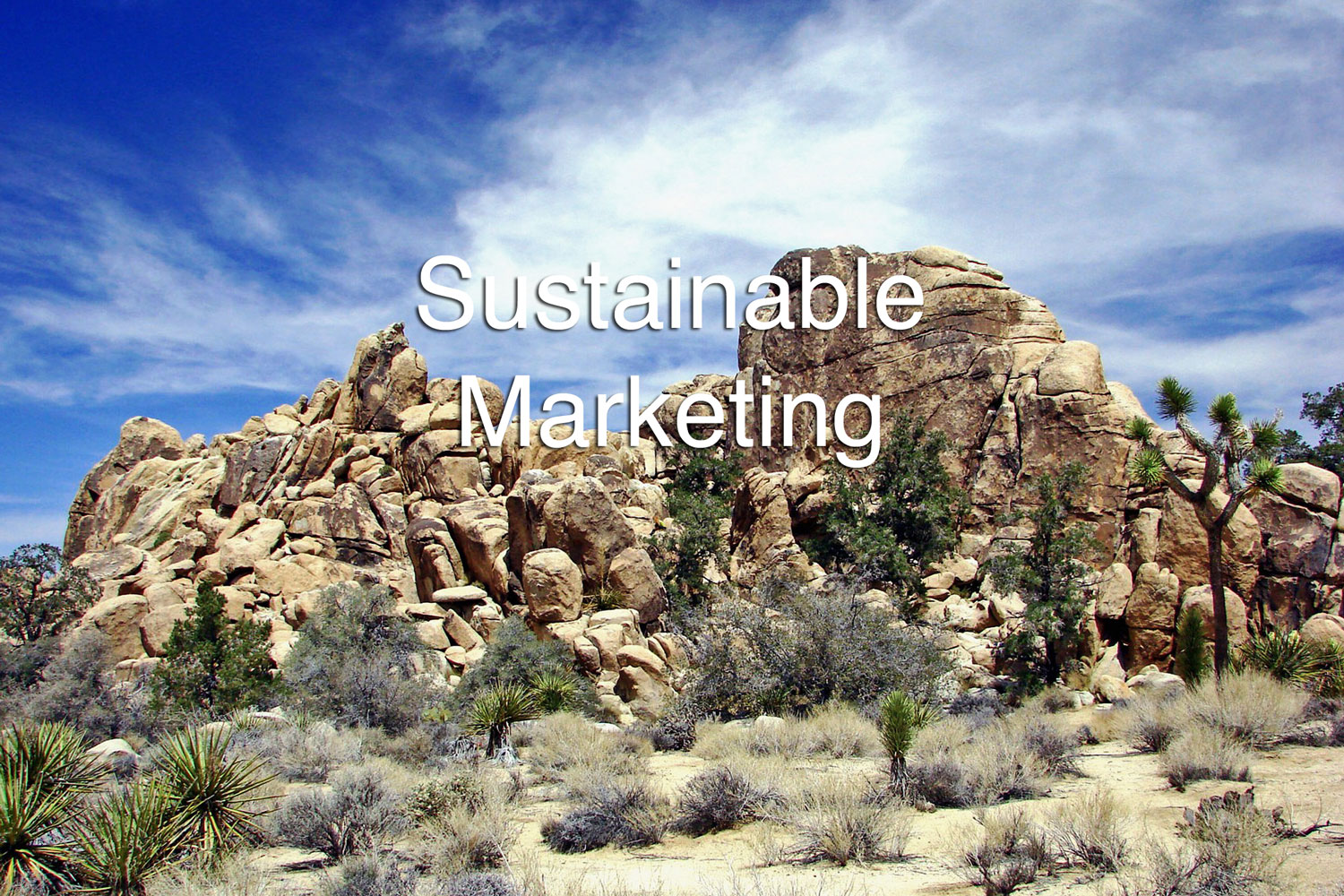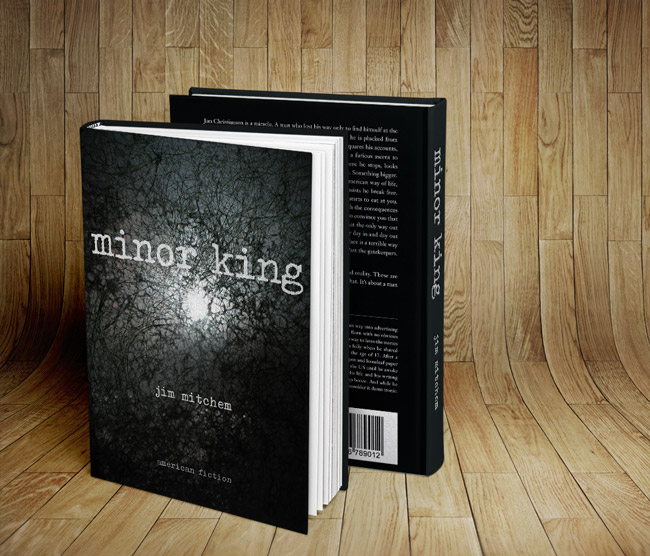
The following is the third post in a three-part series about sustainable marketing. In the first post (here), we defined sustainable marketing, took at look at a case study, and, yes, established my credibility as a qualified voice in the sector. In the second post (here) we looked at the difference between traditional marketing and sustainable marketing, the role of content and why it’s important to share your story with your audience, and how content from different departments within your organization is important to telling your brand’s story. In this post we’ll cover the role of SEO and Google, and talk about social media.
As we established in the previous posts, sustainable marketing is based on three primary tenets: content (storytelling), SEO, and distribution.
A Very Important Thing.
If having an internal program in place for fresh, relevant, and sharable content that engages your audience and drives traffic to your website isn’t enough, perhaps the most important reason to implement a sustainable marketing program is search and SEO.
(Before we go on, yes, I realize that there are other search engines out there. But mostly those other guys attempt to emulate Google, so for the purpose of this article, Google represents all search engines)
Your website is already the hub of all your marketing communications. Your white papers live there. Your videos. Your “About Us” page. Your case studies. Your awards.
But a beautiful website alone isn’t “doing SEO.” In fact, if you’re not routinely publishing content, search engines see your site as a static wall. And no amount of keyword loading will help.
During the 12th annual Advertising Week Conference in New York City, recently, Sir Martin Sorrell, WPP, was quoted as saying, “Google search remains, in my view, the most potent thing.”
Sir Martin is no dummy.
Did you know that every day Google processes more than 3 billion search queries worldwide? No, this doesn’t mean that 3 billion people are looking for your products and services every day. But it does mean that Google is pretty important to driving traffic around the internet.
Here’s how it works: when you have a website, Google spiders visit and index it so that when someone searches a term relevant to you, they can include your site in the search return.
Only, getting listed at the top of these returns requires more than just a website these days.
For a long time, the Google search algorithm was top secret. Google didn’t want to give any information away to competitors, after all. That’s because Google’s primary revenue stream comes from advertising via search. (Yes, you can advertise with Google like you can advertise in your local newspaper, but, for the purpose of sustainable marketing, we focus on organic search.) And they have a lot of ways to advertise. But let’s consider sidebar ads for this article. The more that people use Google for search, the more Google can justify advertising rates for those types of ads. So it behooves Google to provide the most relevant returns possible for someone performing a search.
If suddenly Google started returning spam sites for searches, its users would go to Bing or Yahoo. No, Google wants to provide the most relevant, authentic websites to its search customers.
So Google created some best practices for websites to utilize. One of these best practices is frequency of information. The more you post, the more the Google spiders see that as activity. Another one of these best practices is relevancy. When you consistently post about similar topics, the spiders report back to the mothership that you’re an expert on those topics. Then there’s the idea of authenticity. It turns out that being who you say you are matters to Google.
Why? It all comes back to advertising. By returning the most relevant, authentic sites to a search query, the happier this makes the person doing the searching. Happy searchers mean continued use of Google, which, in turn, helps Google justify rates to advertisers.
The last thing Google wants to do is piss off their customers (the people doing searches). And the easiest way to piss off customers is to return bogus websites filled with backroom keywords in an attempt to fool the Google spiders into thinking that they’re something they’re not.
And so a few years ago Google started tweaking its algorithm to not only recognize and flag these bogus sites, but also to penalize them.
Authenticity matters.
When you routinely post content that reflects your brand, you’re actually satisfying the SEO component of your sustainable marketing program. You win. Google wins. And Google’s customers win. The hard part is simply starting a program like this. It’s non-traditional and requires internal accountability.
But it’s also essential if you want your marketing to work going forward.
The Role of Social Media in Sustainable Marketing
As we’ve discussed, the three core principles of sustainable marketing are content, SEO, and distribution. And while it’s true that social media is an important part of the program, sustainable marketing is NOT social media marketing. Social media marketing is something else altogether, like print ads to a comprehensive advertising campaign.
Don’t get me wrong, social media is an amazing thing. It may well go down as one of the most important innovations of our lifetime. Except, it wasn’t originally created as a commercial endeavor (unlike traditional media.) Social media was created to connect people to people.
Back in 2009 when I was working these new media channels, I was able to generate buzz for the Boxman Studios brand from my personal network. I’d established authentic connections with real people who, as it turns out, were interested in the work I was doing with shipping containers. When I’d push this content into my streams, people read and shared it. And so the ripple effect took hold, and word about Boxman grew.
But way back then, most brands were reluctant to jump on board with social media. They stuck to their traditional guns and waited to ensure that it was safe to engage in the social spaces. Because let’s face it, being authentic in real time is risky. Especially when you’ve been used to having one-way conversations for so long. But then, ever so slowly, brands started using things like Facebook and Twitter. And by 2014, if you didn’t include your Twitter handle in your print ad, you were doing it wrong.
Yes, social media is a great way to distribute your content. My case study with Boxman is proof that it works. But its most valuable commercial function is in the discovery and engagement of fans and customers. That said, social media alone only goes so far. Unless you have a team in place to monitor its constantly evolving environment, the primary function of social media in the sustainable marketing realm is distribution.
Create. Distribute. Monitor. Repeat.
One of the best things about the digital world is that there are analytics for everything. Want to know which pages of your site people visit, or bounce away from the most? Want to know which blog posts are shared most often? Want to test whether Facebook or Twitter is your best option for distribution? All this information, and a lot more, is available to you today through analytics. Which makes it even more essential to start a sustainable marketing program so that you can tweak it to maximize its reach, relevance, distribution—and ultimately to convert more customers.
This sounds too good to be true. There HAS to be a drawback.
There is one thing about sustainable marketing that you’re not going to like. Success doesn’t happen overnight. This isn’t a billboard campaign, after all. And unlike the traditional media salespeople who promise huge returns right away, you’re probably not going to get that via sustainable marketing. Which doesn’t mean you won’t. Heck, your first blog post might be so damn compelling that it’s shared across the globe—driving web traffic and sales inquiries. But more than likely, it will take six months to start to build up a measurable case study to determine what’s working and what isn’t.
With diligence and consistency, however, after a year you’ll be well on your way to reducing your dependency on expensive, unsustainable traditional marketing practices by tapping into the wealth of resources already within your organization.
In Conclusion
Sustainable marketing isn’t rocket science. But it’s also not traditional, so it does take some adventurous foresight to adopt a program like this.
But when you consider how the world is moving along digital lines, how Google influences decisions and drives traffic, and how people are becoming desensitized to traditional advertising, the question isn’t whether you can afford to adopt a sustainable marketing program, but rather whether you can afford not to?
Clearly, there is a lot more to a sustainable marketing program than what we’ve covered in these three posts. I’ll explain everything in my upcoming book on the topic.
In the meantime, visit Smash Communications to learn more about sustainable marketing. And by all means, reach out to me directly to talk about creating a sustainable marketing program for your organization.
Click here for the first post in this series.
Click here for the second post in this series.
***
Jim Mitchem is a writer, consultant, and entrepreneur. He’s been in marketing and advertising a long time. He gets audiences to think differently about things. He published his first novel, Minor King, in 2015, is collaborating on a book called Gone Dogs, and is currently writing a book on sustainable marketing. He has a wife and two daughters. He likes dogs. He really hates writing about himself in third-person.
Image credit Don Graham

Sustainable Marketing Explained, Part 2 obsessed with conformity
Oct 6, 2015
[…] Marketing Explained, Part 1 Sustainable Marketing Explained, Part 3 .post-nav .post_previous a, .post-nav .icon-left-open{ background: #26495b; } .post-nav […]
Sustainable Marketing Explained, Part 1 obsessed with conformity
Oct 7, 2015
[…] Sustainable Marketing Explained, Part 3 […]
Tim
Oct 7, 2015
Very good articles Jim, I like the last article because of the Search Engine Optimization (SEO)mentioned. With the ever changing google, we know see a different local pack then 6 months ago. Google has went from a 7 pack to a 3 pack (http://www.localfirstseo.com/google-updates-the-local-pack/). Making Sustainable Marketing more important along with (SEO)
Jim Mitchem
Oct 7, 2015
“Blog about your business weekly” – that’s exactly right.